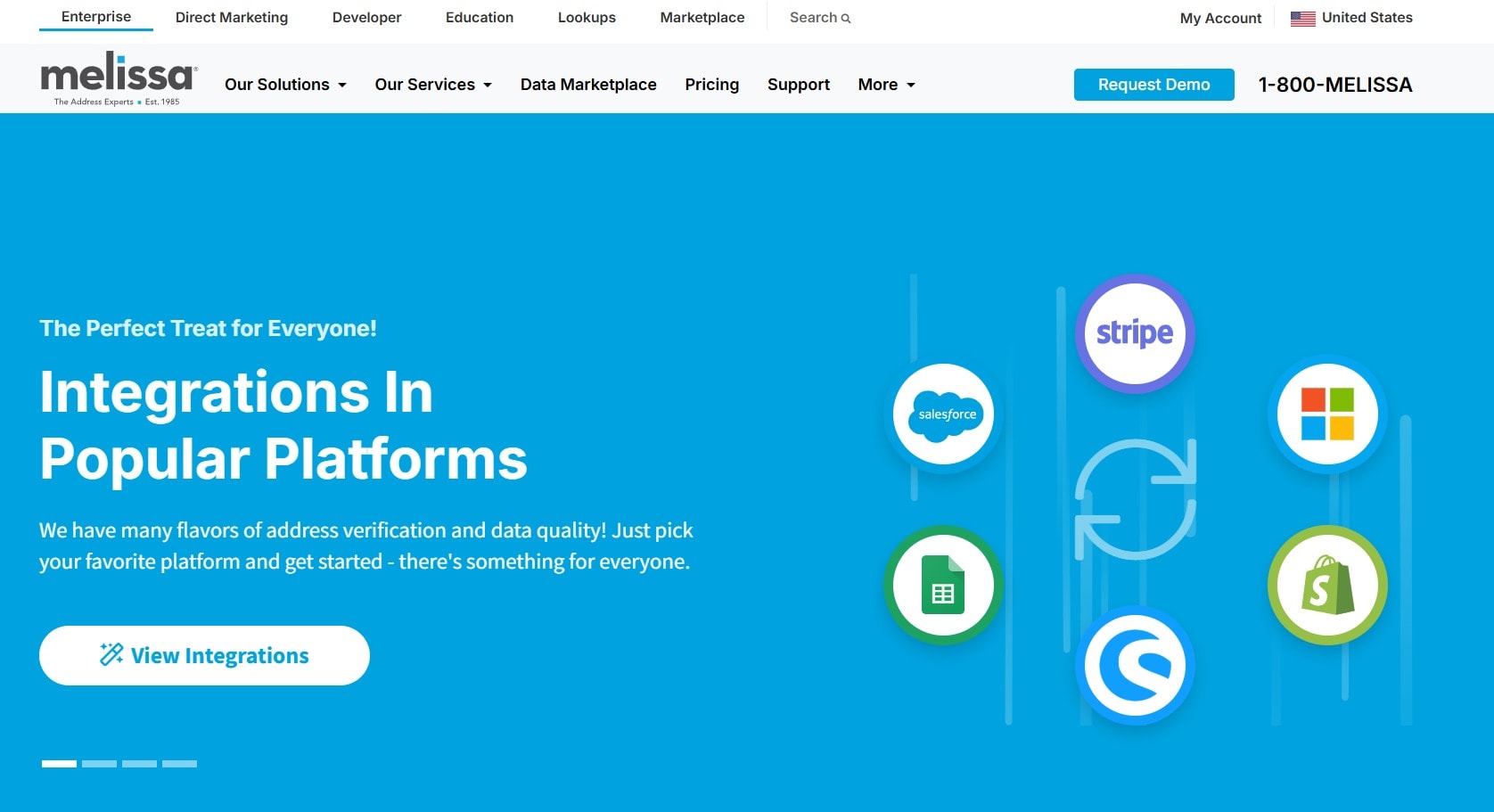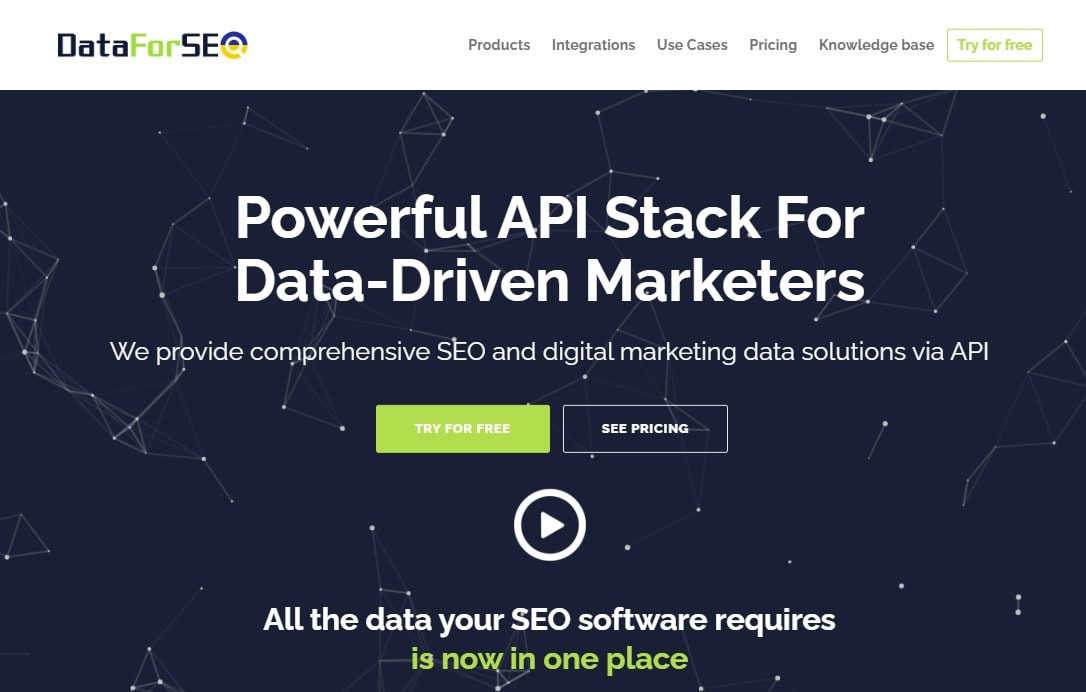What is Data Enrichment, Tools and Implementation Tips
Turn raw data into valuable business insights with data enrichment strategies, and increase your profits.
 March 13, 2025
March 13, 2025 7 minute reading
7 minute reading
Imagine you receive a list of a thousand email addresses at your business. What do they mean? Is it a marketing list? A customer list? A list of subscribers or non-subscribers?
Without additional data, the list of email addresses is useless.
That’s where the benefits of data enrichment step in. By appending external data to raw first-party data, you can turn those raw data points into valuable assets.
What is data enrichment?
The data enrichment process is the final step in turning raw datasets into high-quality, actionable data.
Data enrichment is also called “data appending,” and it consists of adding external data to your first-party data to bring more insight.
For example, imagine you have the following customer record in your CRM:
Customer Name: Jane Smith Customer Email: jane.smith@example.com Customer Phone: (555) 123-4567
On its own, the data isn’t very useful.
However, by adding other key fields, such as purchase history, social media profiles, interests, profession, and marital status, you can make the record more meaningful.
Customer Name: Jane Smith Customer Email: jane.smith@example.com Customer Phone: (555) 123-4567 X Profile: x.com/janesmith4567 Instagram Profile: instagram.com/janesmith4567 LinkedIn Profile: linkedin.com/in/janesmith4567 Profession: Data analyst Company: Acme Data Corp. Marital Status: Married Previous Purchases: - March 01, 2030: Logo Design - April 07, 2030: Data visualization services - June 15. 2030: Python programming
The business case for data enrichment
Many real-world business use cases exist for data enrichment. Here are just a handful of examples:
Cybersecurity
As cyber threats have expanded, so has the need to improve detection and response mechanisms.
A report from an Apple-commissioned study on cybersecurity describes the quantity of data breaches as “an epidemic,” with more than 80% of breaches happening on cloud-stored data.
One of the major improvements in cybersecurity over the last few years has been data enrichment. It’s no longer enough to install an antivirus and firewall and hope for the best. Modern malware and cyber threats often circumvent these protections.
Modern cybersecurity platforms now aggregate data from multiple sources and then enrich that data with data points that can help determine a pattern between previously siloed systems.
For example, the data enrichment might include:
IP Addresses
API calls
Geolocation data
Device fingerprints, such as browser type or hardware specifications
User behavioral patterns, such as typical login times and access locations
Historical threat intelligence from known malicious actors and activities
System configuration changes and administrative activities
The connected and enriched data provides a holistic picture across systems, making it easier to combat threats because of the deeper insight that enriched data provides.
Business decision-making
Adobe created a hilarious ad a few years ago titled “Click, baby, click.” The ad showed two members of a sales team seeing their online sales numbers go off the charts. They tell the boss, who orders a massive—and costly—increase in overseas production. At the end of the ad, we see a baby clicking the “Buy Now” button endlessly, thus skewing the data.
The Adobe ad shows a perfect case of a data enrichment failure. The sales department received only the sales figures and nothing else. Any of the following additional data points could bring insight to the situation and prevent a catastrophic spending spree:
Customer name: This data point alone would show that the sales were all coming from a single customer.
City name: In some cases, companies aren’t allowed to share details such as customer names or email addresses. However, simply enriching the data with the city name would reveal that most purchases came from one city. A data scientist could then further investigate the anomaly.
The ad’s moral is simple: Poor data = poor decisions.
Preventing opportunity costs
An opportunity cost is the “cost” of not capitalizing on an opportunity. For example, imagine you sell widgets and then receive an unexpected endorsement from a celebrity. The demand for your widgets skyrockets, but you run out of stock, losing out on thousands of potential sales.
The sales you didn’t make are called an “opportunity cost.”
Opportunity costs are more challenging to recognize than realized losses. Data enrichment is crucial to prevent them because it brings deeper insights and so helps you make more informed decisions.
Often, people don’t know what data they’re missing. As well-known entrepreneur Brandon Dawson points out in his book Nine-Figure Mindset: How to Go from Zero to Over $100 Million in Net Worth, you don’t know what you don’t know.
Part of succeeding is to find out what you don’t know, and data enrichment helps you do that.
Sometimes, the data sources you use to enrich your data might seem strange on their own. However, when you connect those data points with other data points, you suddenly obtain insight that you wouldn’t have seen before.
For example, imagine a restaurant chain that decides to enrich its purchases with local weather data such as temperatures and rainfall. The data might show that people order more hot soups on cold days or that stay-in orders and home deliveries go up when it’s raining. Without the enriched data, properly correlated, we can only guess if these things are true.
This is why machine learning and AI are such massive breakthroughs. They help discover correlations that humans “don’t know that they don’t know.”
If you need help working out what data you can add to enrich your current datasets, reach out to one of Fiverr’s expert data processing consultants to help you.
Find a data entry clerk for hire
Improving customer experience
According to McKinsey & Company, improving the customer experience increased revenue by up to 7% and profitability by 2%.
Customer experience is especially vital in ecommerce.
For example, you might initially enrich customer profile data by asking the customers to fill in any missing data points in their customer profiles. You could ask them for a list of likes, hobbies, or even demographic data if it relates to your store.
To encourage customer engagement, you could create a targeted marketing campaign that incentivizes them to fill in all their customer preferences by giving a gift to those with a “100% complete profile.”
You can then enrich your customer data further with other data sources. If you have the customer’s location, you might enrich your data with data about local shopping trends. If you have the customer’s social media profiles and they give you a like on a specific post, you can use that to enrich the customer’s profile as well.
Improving the customer experience also improves the customer relationship and the customer’s overall lifetime value to your business.
Data enrichment vs data cleansing
Data cleaning and data enrichment form part of the greater topic of improving data quality. However, they’re two distinct steps and apply at different stages of getting your data ready for analysis or data visualization.
Data cleaning removes errors and ensures the data integrity of your underlying data. It looks for anomalies, duplicate records, biased data, incorrect formatting, data structure errors, and so on.
Once your data integrity is handled, you can then start enriching that data. When properly done, data cleaning makes it easier to enrich the data with third-party data.
The best way to understand this is visually.
In the example below, we have “dirty data.” Data is missing, incorrectly formatted, or downright wrong. There are also two records for “John Smith.”
Was it the same John Smith or a different one?
Fixing this data would require a combination of manual and automated work, such as manual data entry to fix the major errors and then a few Excel formulas to sort out the rest.

Excel
In the example below, we’ve cleaned the data and enriched it.

Excel
The “Total Spent” column now contains pricing purely as a number without any currency symbol. We’ve pulled the currency symbol into its separate column and can then enrich the data with foreign exchange rates from an API. This allows us to convert all the values to a single currency so we know who spent the most.
We also enriched the data with an IP address column which makes it easier to clean the “Location” column, which we’ve renamed to “City.” We use the IP address to determine the person’s location.
We could enrich this data with many more values, such as social media profiles, total lifetime purchases, median household income, and any other data we’re legally entitled to use. The more data you have, the deeper your insights will be.
Find a data entry clerk for hire
Tips for implementing a data enrichment program
Here’s a comprehensive program for how you can implement a data enrichment program at your business:
Step 1: Define clear objectives
There’s no point in getting data for the sake of getting data. To run a small business, you don’t need every data point under the sun for each of your customers.
So the first step is to define your objectives. What exactly are you trying to achieve with your data enrichment program?
Do you want:
Higher sales?
More targeted marketing?
More email open rates?
Less costs?
Each of these goals will inform the type of additional data you’ll need to achieve the objective.
Step 2: Select high-quality data sources
Once you’ve established your objectives, you must source high-quality data sources that will help you get the right data to achieve those objectives.
If your goal is to lower costs, you might need accurate pricing data from suppliers. If the costs are seasonal, you might need forecasting data to work out when you could safely start purchasing stock.
One of the most competitive data areas is financial data for stock prices. Accurate, real-time rates are extremely expensive.
You should balance the precision of your data with the price. There’s no point in paying for premium real-time stock prices when your interest is to aggregate the data and determine trends.
Step 3: Work out the workflow
Data management consists mainly of:
Gathering the data
Cleaning it
Validating it
Enriching it
Analyzing it
Visualizing it
These steps overlap, and full data accuracy requires going through some of the steps iteratively. For example, when trying to clean the data, you might find that the underlying data source is atrocious. In that case, you’d go back to the previous step and gather data from a better source.
Data cleaning typically requires heavy manual work to determine where most of the errors and anomalies are. In this step, you’ll typically find patterns that you can automate. For example, you might find a data pattern that’s easily resolved through a simple Excel formula.
Data validation is mostly automated by using algorithms that test the data against certain benchmarks. You might still want to have a human spot-check the data occasionally as well.
The enrichment process tends to be more automated. Once the data is cleaned, you plug the data into an automated workflow that extracts enriched data from third-party sources.
Find a data engineer for hire
Top data enrichment tools
Although data enrichment might occasionally require manual input, it’s far more automated than data cleaning. The following tools provide automated solutions for the data enrichment process:
Melissa Data

Melissa
Melissa Data is an advanced platform for medium-to-large businesses that provides a wide array of data solutions.
In addition to automated data verification for physical addresses and emails, it also offers data enrichment services such as:
Geocoding
Business lead scoring
Consumer demographics
Finding phone numbers for businesses
Reverse email data (finding mailing addresses from email addresses)
And others
The service isn’t cheap, although it might be a strong option for larger companies.
DataForSEO

DataForSsEO
DataForSEO provides SEO and marketing data via APIs. It offers social media data, backlinks data, reviews data, and other data to use in your business and apps to enrich them.
Unfortunately, its pricing is somewhat opaque, which is sadly the norm for many “pay-as-you-go” cloud service providers. However, they do have per-use pricing for each of its services, which you can click through and then pull out your calculator to work out the exact pricing based on how much you estimate you’ll use.
Custom API and software solutions
Often the best option for data enrichment is a custom option. This is especially true for small businesses.
A custom solution allows you to get the data you want in precisely the format you want it without needing to think through complex formulas and data science concepts.
Many open data sources exist. For example, you don’t need an additional API to get social media data for public social media fees. You can just use the official APIs of that social media platform.
The steps to create your solution consist of analyzing the data, figuring out where and how to get third-party data, and then coding a customized solution to pull that data into your business.
That’s a lot of steps, and Fiverr has data processing services who can help you figure out the best strategy.
Get help from Fiverr experts
Data scientists typically spend 80% of their time getting data into a workable state and only 20% analyzing it.
Numerous different skills are required to make data usable, such as data analysis, programming, and data cleaning.
During your analysis, you might also discover that your website needs work because it isn’t gathering enough data from buyers. In that case, you’d need to fix the website.
Fiverr has expert freelancers and consultants in all these areas to help you, as well as programmers to help you put your data enrichment solutions into effect.
Open up an account on Fiverr and start enriching your business data for better decisions today.
Data enrichment FAQs
What is the meaning of data enrichment?
Think of your existing data as a partial picture. Data enrichment completes this picture by adding missing pieces from external sources, making your data a complete, actionable resource.
What is an example of enriched data?
In an ecommerce store, you might only have a customer’s email address and a handful of other personal details. One example of enriching the data would consist of adding data such as social media handles, personal tastes, engagement metrics, and purchase history to that record to help you improve marketing strategies for that person.
Is data enrichment legal?
Laws vary across jurisdictions. However, data enrichment is typically legal if you’re using data that (a) is publicly available or (b) is not publicly available but for which the user has given their consent. You should consult with a legal professional in your zone to make sure, as we aren’t qualified to provide legal advice. You can also get general legal advice from Fiverr freelancers.
What is data enhancement?
Data enhancement is another term for data enrichment. In practice, it means taking the types of data you have and making them more valuable through additional information from data providers.





